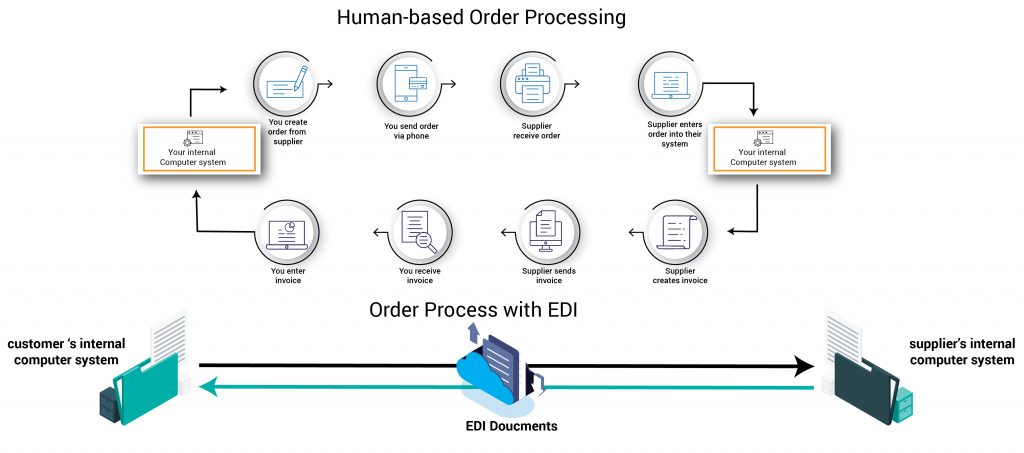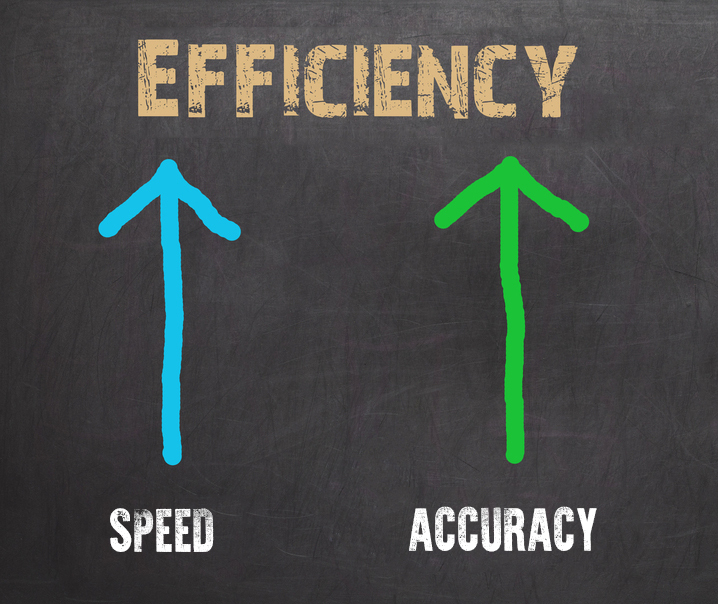What is EDI Electronic Data Interchange?
EDI Electronic Data Interchange allows two parties to exchange business documents without a human touch. Since humans are not involved, Computers are talking to other computers, Orders are delivered faster with fewer errors at a less than 25% cost of human-based order processing.
EDI example

EDI Flow for Order-to-Cash Transactions
Customer sends an order to Supplier – EDI-850
Supplier responds with an order acknowledgment – EDI-855
Supplier sends Advance Shipment Notice – EDI-855
Supplier sends an invoice – EDI-810
Customer send payment details to the supplier – EDI-820
3 Reasons why your organization needs EDI in 2020
Cost Saving

EDI provides cost efficient processes. Some examples include ASNs (Advanced Shipment Notice) that reduce processing times that remove the manually receiving of files and the transition to a digital platform will cause a large reduction of the use of paper after the implementation of EDI.
Speed and Accuracy

EDI allows you to exchange transactions quickly and efficiently. This in turn can also reduce error transactions. Common errors that can be avoided with the use of EDI include illegible or lost paper documents. EDI saves you the time it takes to correct these errors and expedites your organizations processes.
Visibility

Benefits of EDI
- Easily and seamlessly connect with partners
- Streamline business processes management
- Establish clearer, deeper visibility
- Secure the B2B value chain and data
- Deliver high-availability B2B operations
- Access application extension and certified container support